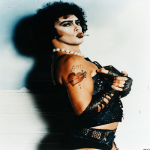How to start a Story
How to start a story.
There is no one perfect way to start a story. In this post, we will examine three common ways to start a book: dialogue, action and in medias res. For each choice, there are pros and cons. Your story and character will dictate which one you choose.
DIALOGUE
Dialogue is my favorite part of writing. I love the beats, the subtext, finding the perfect phrase. But starting a book with dialogue is not as common as you’d think. (More books start with a prologue than dialogue, despite agents’ claims they hate prologues.) If dialogue its your first line, make sure it has IMPACT. Starting off with “Hello” will put your readers to sleep. But “Make sure you BBQ the cat properly,” will raise eyebrows and interest. (No offence to cats.) In Jonathan Maberry’s action novel “Dogs of War”, the opening line is: “Mom..?” she whispered into the phone. “Mom, I want to come home.” Why is this line effective? There’s a question mark at the end of the first Mom. Is she leaving a message? Does she know who answered the phone? She’s whispering. Why? So no one hears her? Because she’s frightened? ‘I want to come home’ can mean she’s kidnapped or lost or a runaway. With just a few words, readers are intrigued.
Pros: If you have a great opening line of dialogue, that can be gold in capturing readers.
Cons: There is no context to who is saying it, why or the circumstances surrounding it.

ACTION
I will differentiate between action – a bomb exploding, someone getting stabbed – versus a character in the middle of doing something. The latter is what is commonly referred to as action. You can have someone getting stabbed right away, but a breakneck action scene with lots of moving parts, characters readers don’t know anything about etc, can be confusing. The purpose of a beginning is to bring the reader in. Humans are hard wired to consume stories in a certain way. Our brains need to grasp onto something tangible and relatable to move us forward. A million bombs going off doesn’t offer that. In Ken Follet’s novel “The Key to Rebecca” the opening line is ‘The last camel collapsed at noon.’ Camel? There’s more than one? Why did it collapse? Why noon? Immediately you have questions and want to know more.
Pros: A set up with action can tell your reader something about your character or the plot. Doe your character have a quirk, a fetish. Are they OCD? A slob? The right action can bring you into the setting and plot immediately.
Con: Action without fleshing out characters can be confusing. Why is someone doing X? What is the motivation or the circumstances? If using action, find a balance between the movement and the character.

IN MEDIAS RES
Although this also opens in the middle of action, the difference action described above and in medias res is the latter brings you into, or makes reference to, part of the story that has already happened. Hamlet is an example of this, as is the kaleidoscopic Brazilian movie “City of God.” Some books, such as Bret Easton Ellis’ “The Rules of Attraction” starts and ends in medias res…literally midway through a sentence.
Pros: If used effectively, in medias res can intrigue. It sets up an event or action that lodges in the readers mind and as the layers come off as readers move deeper into the story, it starts to make more sense. Readers have ‘ah ha’ moments and in media res used well, can be very clever.
Cons: Flashbacks are commonly used in conjunction with this to help flesh out past details, but dialogue can also be employed. Flashbacks can be tricky. A common complaint from readers is flashbacks take them out of the story they are interested in, so its vital to build them in as seamlessly as possible.

WHAT SHOULD YOU USE?
Your book and your characters will ultimately determine how you start. The beginning of a book is so important for writers to attract agents and publishers. The first ten pages of a novel are the ‘make or break’ test – do you end up on the reject pile or do they want to read more? Because of this importance, the first few paragraphs of chapter one are the most re-written. (Trust me, I know.)
Go with your gut, or brainstorm with different opening lines to see where they lead you. Watching how the rest of the story flows from different opening choices can lead you to the right decision.
My next post will cover tips for writing in first person. This is my favorite POV as a reader and a writer. Learn how to give your protagonist the voice and attitude they need to resonate.
Happy writing!


